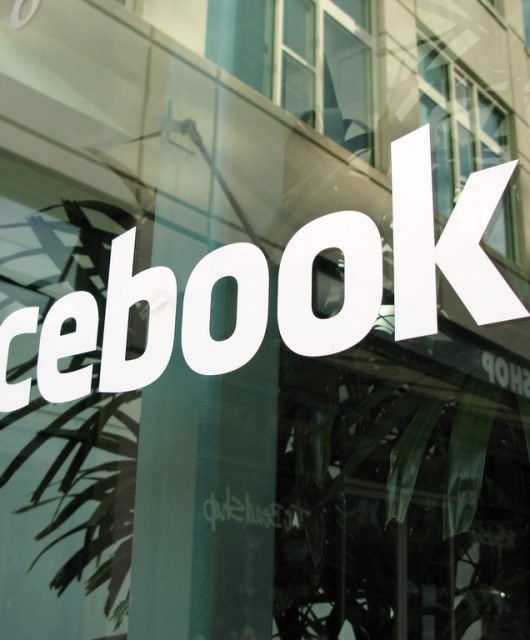Digital Transformation As An Indispensible Brand Investment: Q&A With MRM/McCann MENAT’s Jad Hindy
Brands are constantly shifting and evolving to catch up with today’s increasingly digital world that demands new strategies and techniques to stay relevant in the game.
We’ve exclusively interviewed Jad Hindy, Regional Managing Director MENAT for MRM/McCann, on why should brands embrace digital transformation.
BB: The term “digital transformation” has been commonly used to describe anything that operates within the horizon of social media, mobile and web. What does “digital transformation” mean for brands? How can it change the face of a brand?
JH: I think before talking about digital transformation in general we owe it to everyone to bring some clarity to the term; digital transformation is not about social media, mobile or becoming digital, in my opinion those are some of the elements of digital transformation. I believe digital transformation, is not about digital as much as it is about transformation. A brand or a company will have to go through transformation when everything around it goes through change or transforms, and by everything I mean the 5 Cs, namely; culture, category, company, consumer, and connections. All those undergo major shifts or transformations as we, the humans, advance. And when brands don’t realize that the world around them transformed, and that they should follow suit, they end up becoming irrelevant by not being able to keep up with what’s going on around them.

Digital transformation is an investment above all else—an investment in the future of the brand or company. And it is a process, a process to keep your brand, product or service, relevant and required. It is a process that will bring change, restructuring, repositioning, a process that will boost revenues, increase stock prices, and improve customer and shareholder satisfaction. Put simply, it’s meant to keep the brand from becoming obsolete.
In our current time and age, transformation took on board the term digital, because it is the result of all the change that digital technologies brought into our life in the last 20 plus years.
And yes, it might involve the adoption of cloud computing, new social media platforms, or even subscription-based services. There’s no one-size-fits-all-approach. Across the board, digital transformation can change the face of a brand by incorporating new tech and shifting the overall customer experience.
BB: One of the most important aspects of digital transformation is “making it personal.” How can brands leverage digital transformation to become more consumer-centric?
JH: Brands need to be mindful while undergoing digital transformation. Specifically, companies must listen to their customers and adopt technologies and processes accordingly.
Innovating for the sake of innovating, without really listening to what customers are looking for, is far from ideal. Actually, it won’t yield any results.
To this end, brands need to be strategic. They have to pay attention to what customers want, ask for feedback, conduct research —perhaps in the form of a survey, or on social media—and transform based on concrete data and candid discussions. At the end, to become fully transformed, a brand or company has to be fully customer centric!
BB: While brands are able to reach consumers throughout many moments in their lives, competition for their attention is becoming stiffer. How can digital transformation help brands stay competitive?
JH: Most brands aim to be disruptors in their respective industries. To truly stay competitive, however, companies need to be strategic, and relevant. This means identifying their target demographic and determining where those customers spend most of their time – don’t forget the 5Cs. A brand with a million Instagram followers, for instance, isn’t really competitive and thus not really relevant, if they aren’t getting the engagement they’re after.
This is where digital transformation comes in, as the process forces brands to ask key questions. For instance, which social media platforms does their target audience prefer? What communication channels resonate most with this group? How is the company’s email marketing read-through rate? How are their blog posts performing?
Ultimately, digital transformation can help brands stay competitive by forcing them to take a close look at how and where they should be investing their resources.
BB: Digital, and especially mobile, has fundamentally changed the way people consume media, develop brand preferences and choose products. Can you elaborate on how digital transformation has made an impact on empowering consumers?
JH: With the advent of mobile in particular, customers have more options than ever. They are typically bombarded with ads, emails, posts, and other forms of communication from massive corporations, small brands, and everyone in between.
Think of it this way: Attention spans are short, and the competition is steep. So, customers have to make decisions. They might feel empowered because they can assess a brand’s product or service, explore how that brand communicates online, and decide whether they want to pay attention.
The ball is in their court, so to speak—because again, brands or companies that undergo digital transformation most successfully are the ones that have taken customer preferences into account. This includes everything from strategic communication to the actual tech involved in the customer experience.
BB: Digital transformation is the act of investing in people, technology, systems, and processes to upgrade how businesses work in this digital economy. In your opinion, what are the key challenges that face brands when developing a digital transformation strategy?
JH: Lack of understanding and awareness, budgetary setbacks and lack of organization are three common challenges brands face when developing their digital transformation strategy. Resistance to change, however, is generally the most visible struggle.
Now, the challenge here is twofold. First, it’s rooted in the changing customer experience. Customers tend to like what they like—yet they expect brands to keep up with the latest tech and be innovative.
This can be a bit of a double-edged sword. Say, for instance, a retailer releases an app meant to enhance the user experience—the company will have to make every effort to avoid alienating customers who prefer web interactions. Maintaining a varied presence with several touchpoints is key here.
Second, employees can be rather change-resistant as well. To minimize internal pushback, it’s essential to keep staff involved in the discussion while designing a digital transformation strategy. Transparency is crucial.





